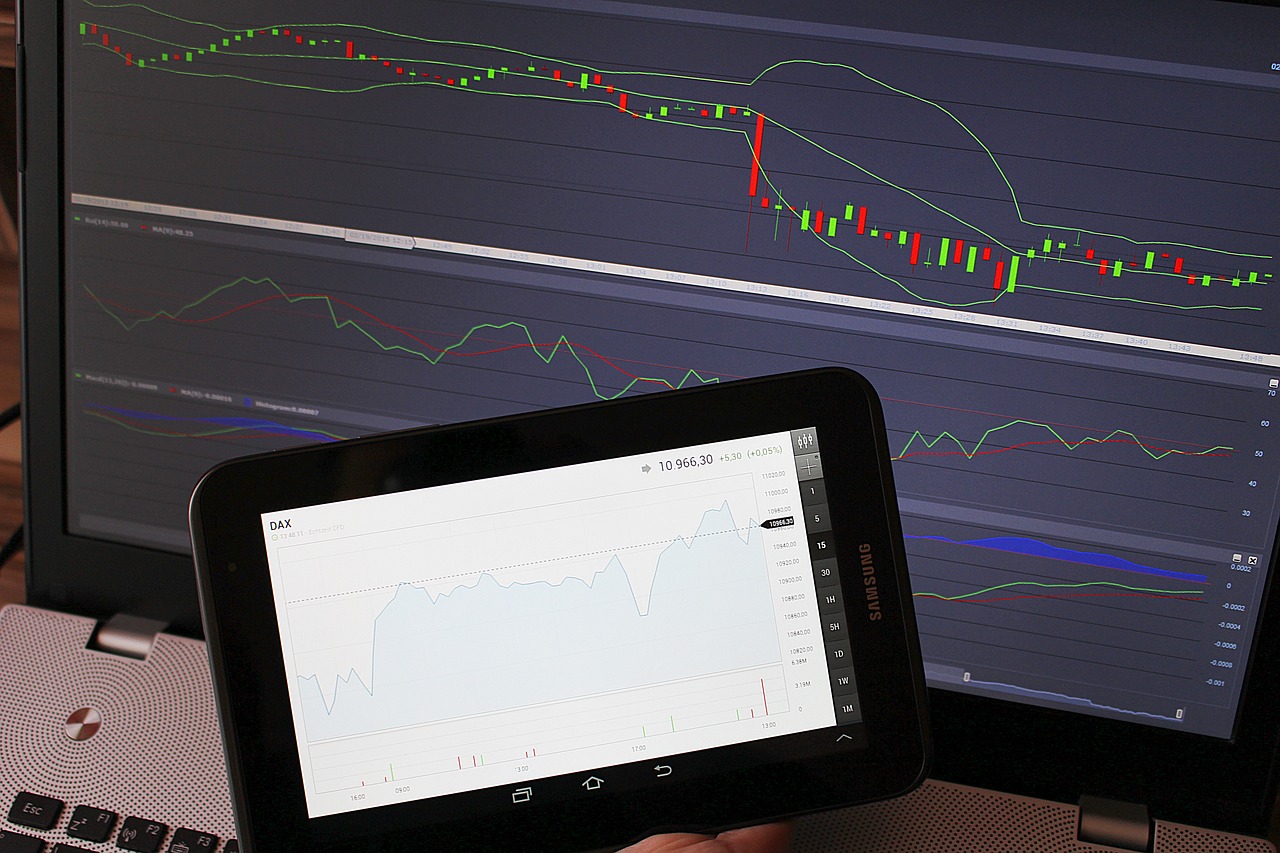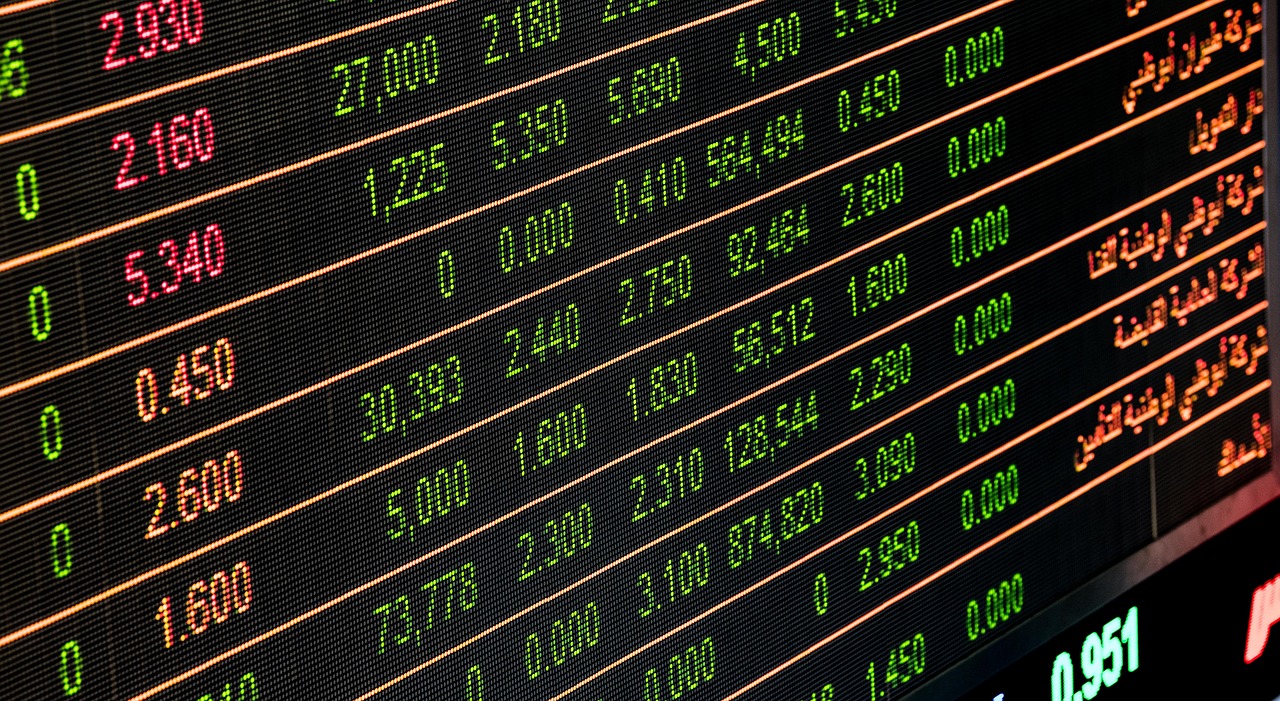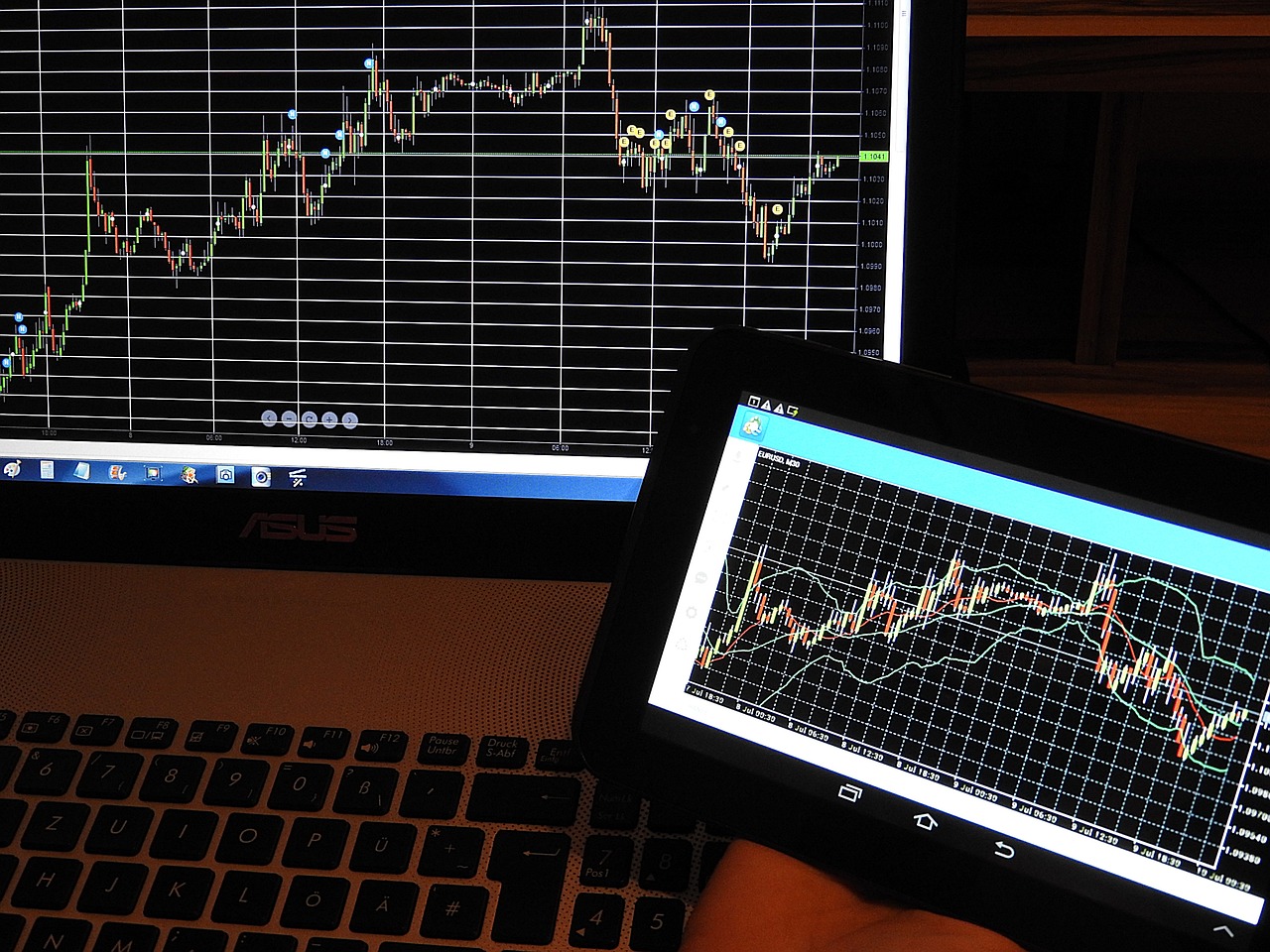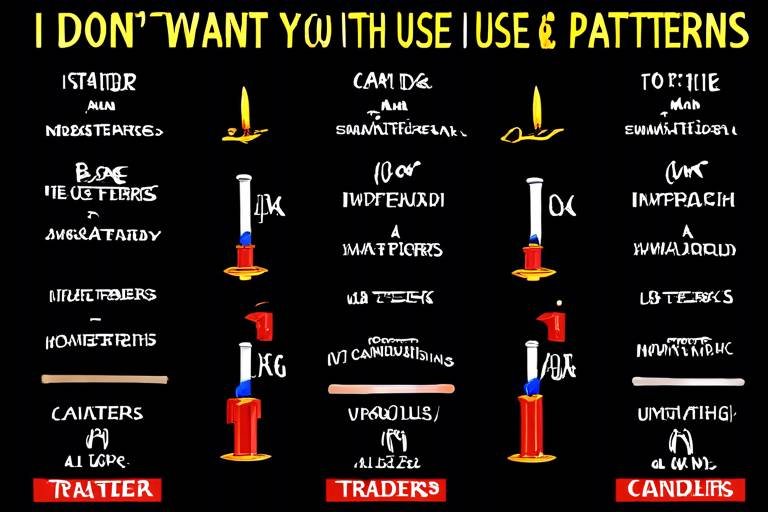The Power of Trendlines in Crypto Trading
In the fast-paced world of cryptocurrency trading, making informed decisions can feel like trying to find a needle in a haystack. With prices fluctuating wildly and market sentiment shifting in the blink of an eye, traders often seek tools that can provide clarity amid the chaos. One such tool that has stood the test of time is the trendline. These lines are more than just simple drawings on a chart; they are powerful indicators that can guide traders through the tumultuous waters of crypto markets.
Trendlines serve as visual representations of price movements, allowing traders to identify the overall direction of the market. By connecting key price points, trendlines help traders see whether the market is trending upwards, downwards, or moving sideways. Imagine driving down a winding road; just as you would look for signs to navigate your path, trendlines act as your navigational aids in the world of trading. They help you understand where the market has been and where it might be headed, making them invaluable for anyone looking to enhance their trading strategies.
Moreover, trendlines are not just for seasoned traders; they are accessible to anyone willing to learn. By understanding how to construct and interpret these lines, traders can gain insights into potential price action and market sentiment. Whether you’re a novice just starting or a seasoned pro looking to refine your approach, mastering trendlines can significantly improve your market analysis and decision-making processes.
At its core, a trendline is a straight line that connects two or more price points on a chart. These lines help traders visualize trends and identify potential reversals in the market. By drawing trendlines, traders can easily spot the overall direction of price movements, which is crucial for making informed trading decisions. Think of trendlines as the backbone of technical analysis; they provide structure and context to the often chaotic price movements of cryptocurrencies.
There are three primary types of trendlines that traders commonly use: upward trendlines, downward trendlines, and horizontal trendlines. Each type serves a unique purpose in market analysis and can provide valuable insights into potential price action and market sentiment.
Upward trendlines are drawn by connecting a series of higher lows on a price chart. They indicate a bullish market sentiment, suggesting that prices are generally increasing over time. By identifying upward trendlines, traders can spot potential buying opportunities. For instance, if the price retraces to the trendline, it may present a good entry point for a trade. This is akin to catching a wave in surfing; being able to identify the right moment to ride the upward trend can lead to significant gains.
One of the critical functions of upward trendlines is their ability to act as support levels. When the price approaches the trendline, it often finds support and bounces back up. This behavior allows traders to set stop-loss orders just below the trendline, effectively managing their risk. By using trendlines as support levels, traders can protect their investments and minimize potential losses.
Understanding upward trendlines can also help traders pinpoint optimal entry points for their trades. When prices retrace to the trendline, traders can look for additional confirmation signals, such as bullish candlestick patterns or increased trading volume, to make informed decisions. This strategy is similar to waiting for the perfect moment to jump into a pool; timing is everything, and being patient can lead to a refreshing plunge into profits.
Conversely, downward trendlines are drawn by connecting a series of lower highs. These lines signify a bearish market, indicating that prices are generally declining. By recognizing downward trendlines, traders can identify potential selling opportunities. For example, if the price rallies to the trendline and then shows signs of weakness, it may be a signal to enter a short position. Just as a bird knows when to take flight, traders must learn to recognize when to act in a bearish market.
Accurate trendline drawing is crucial for effective market analysis. Traders should focus on connecting as many price points as possible while maintaining the integrity of the trend. A well-drawn trendline can provide reliable trading signals, while a poorly drawn one can lead to confusion and miscalculations. It's essential to practice and refine this skill, as it can significantly impact your trading success.
Many traders fall into the trap of making common mistakes when drawing trendlines. Some of these include:
- Connecting too few points, leading to unreliable signals.
- Ignoring market context and drawing trendlines that don’t align with overall market sentiment.
- Failing to adjust trendlines as new price data emerges.
By being aware of these pitfalls and practicing diligent trendline drawing, traders can enhance their strategies and improve their chances of success.
While trendlines are powerful on their own, they can be even more effective when combined with other technical indicators. For example, integrating trendlines with moving averages or the Relative Strength Index (RSI) can provide deeper insights into market conditions. This combination allows traders to validate their strategies, ensuring they are not relying solely on one tool for decision-making.
Using trendlines alongside other indicators can yield confirmation signals that enhance trading accuracy. For instance, if a price approaches a downward trendline and the RSI indicates overbought conditions, it may signal a strong selling opportunity. This multifaceted approach is similar to having multiple navigational tools on a road trip; the more information you have, the better your chances of reaching your destination safely.
Q: How do I draw a trendline?
A: To draw a trendline, identify at least two price points that demonstrate a clear trend. Connect these points with a straight line, ensuring that the line touches as many points as possible without cutting through the price action.
Q: Can trendlines guarantee profits?
A: While trendlines can provide valuable insights, they do not guarantee profits. They should be used in conjunction with other analysis tools and risk management strategies.
Q: How often should I adjust my trendlines?
A: Trendlines should be adjusted as new price data emerges. Regularly reviewing and updating your trendlines ensures they remain relevant and accurate.

Understanding Trendlines
Trendlines are essential tools in the world of technical analysis, acting as the backbone for traders who want to navigate the often turbulent waters of cryptocurrency markets. But what exactly are trendlines? Simply put, they are straight lines that connect price points on a chart, helping traders visualize the direction of price movements over time. Think of them as the guiding stars in the vast universe of trading—without them, you might find yourself lost in the chaos of fluctuating prices.
When you look at a price chart, you’ll notice that prices don’t just move up and down randomly. Instead, they tend to follow certain patterns. This is where trendlines come into play. By drawing a line that connects significant price points, traders can identify whether the market is in an upward, downward, or sideways trend. Each type of trendline provides valuable insights into market sentiment and potential future price movements.
For instance, an upward trendline is drawn by connecting a series of higher lows, indicating that buyers are consistently stepping in at increasingly higher prices. Conversely, a downward trendline connects lower highs, suggesting that sellers are dominating the market. Horizontal trendlines, on the other hand, indicate a period of consolidation where the price is moving sideways, often signaling indecision among traders. Understanding these lines can significantly enhance your market analysis, allowing you to make more informed trading decisions.
To put it simply, if you’re trading without using trendlines, it’s like trying to navigate a ship through a storm without a compass. You might get lucky sometimes, but more often than not, you’ll find yourself off course. By incorporating trendlines into your trading strategy, you can better anticipate market movements and position yourself for success.
In summary, trendlines are not just arbitrary lines; they are powerful indicators that can help you decipher the complex language of the market. Whether you're a beginner or a seasoned trader, mastering the art of drawing and interpreting trendlines can give you a significant edge in the competitive world of cryptocurrency trading.

Types of Trendlines
When it comes to navigating the turbulent waters of cryptocurrency trading, understanding the various types of trendlines can be your lifeboat. Trendlines are not just simple lines on a chart; they are powerful indicators that help traders decipher the market's mood. In essence, they allow you to visualize the price movements of cryptocurrencies and gain insights into potential future trends. Let’s dive deeper into the three main types of trendlines: upward, downward, and horizontal.
Upward Trendlines are like the sun breaking through the clouds on a gloomy day. They signify a bullish sentiment in the market, connecting a series of higher lows. This type of trendline is drawn by connecting at least two or more significant lows on the chart. The more points you connect, the stronger your trendline becomes. Traders often look for upward trendlines to identify potential buying opportunities, as they indicate that buyers are in control and pushing prices higher.
On the other hand, Downward Trendlines are the opposite of their upward counterparts. They connect lower highs and indicate a bearish market sentiment. Picture a roller coaster that’s headed down – that’s the market when you see a downward trendline. This type of trendline helps traders identify selling opportunities, as it suggests that sellers are dominating the market, pushing prices lower. Just like upward trendlines, the strength of a downward trendline increases with the number of points it connects.
Lastly, we have Horizontal Trendlines, which can be thought of as the calm before the storm. These trendlines indicate a period of consolidation where the price is moving sideways, showing neither clear bullish nor bearish sentiment. Horizontal trendlines are drawn by connecting significant highs and lows that occur at similar price levels. They often act as support or resistance levels. Traders watch for breakouts above or below horizontal trendlines, as these can signal potential price movements in either direction.
In summary, understanding these three types of trendlines can significantly enhance your trading strategy. Here’s a quick recap:
| Type of Trendline | Market Sentiment | Purpose |
|---|---|---|
| Upward Trendline | Bullish | Identifying buying opportunities |
| Downward Trendline | Bearish | Identifying selling opportunities |
| Horizontal Trendline | Consolidation | Identifying support and resistance levels |
By mastering these trendlines, you’re not just drawing lines on a chart; you’re creating a roadmap that can lead you to profitable trading decisions. Remember, the market is constantly changing, and being able to read these visual cues can make all the difference in your trading journey.

Upward Trendlines
Upward trendlines are like the guiding stars for traders navigating the sometimes turbulent seas of the cryptocurrency market. They represent a bullish sentiment, connecting a series of higher lows on a price chart. By drawing these lines, traders can visualize the overall direction of the market and make informed decisions about when to buy. Imagine standing at the edge of a cliff, looking down at the waves crashing below. The upward trendline is your safety rope, providing assurance that the market is on an upward trajectory.
To draw an upward trendline, you need to identify at least two significant lows on the price chart. Once you have these points, simply connect them with a straight line. The more points you can connect, the stronger the trendline becomes. A well-drawn upward trendline not only shows the bullish trend but also acts as a psychological barrier for traders. As long as the price remains above this line, it signals that buyers are in control, and the trend is likely to continue.
But how do you interpret these upward trendlines? They serve as potential buying opportunities for traders. When the price approaches the trendline, it often bounces back, giving traders a chance to enter the market at a favorable price. This is where the beauty of upward trendlines shines. They help traders identify critical support levels, which we’ll explore in the next section.
Upward trendlines are not just pretty lines on a chart; they often act as support levels. Think of them as the floor of a room, preventing prices from falling too low. When the price approaches the upward trendline, it may find support and bounce back up. This is a crucial aspect for traders, as it allows them to set stop-loss orders just below the trendline, effectively managing their risk. For example, if a trader buys an asset at $100 and the upward trendline is at $95, they might set a stop-loss at $94. This way, if the price breaks below the trendline, they minimize their potential losses.
Understanding upward trendlines can significantly enhance your trading strategy. When the price pulls back to the trendline, it presents an excellent opportunity for entering trades. Traders often look for signs of a bounce off the trendline to confirm their entry point. For instance, if the price touches the trendline and then shows bullish candlestick patterns, it may be a strong signal to buy. The key here is to be patient and wait for confirmation before jumping in. After all, in trading, timing is everything!
In summary, upward trendlines are essential tools for traders looking to capitalize on bullish market conditions. By accurately drawing and interpreting these lines, you can identify potential buying opportunities, set effective stop-loss orders, and determine optimal entry points. As you become more familiar with upward trendlines, you'll find that they can significantly improve your trading decisions and overall market analysis.

Identifying Support Levels
When it comes to trading, understanding support levels is like having a secret weapon in your arsenal. Support levels are essentially price points where a cryptocurrency tends to stop falling and may even bounce back up. Think of them as a safety net for traders; when prices drop to these levels, there's often a surge of buying interest that can push prices higher again. This is particularly crucial when you're using upward trendlines because they can help you pinpoint where to set your stop-loss orders, ensuring that your potential losses are minimized.
To identify these support levels effectively, traders often look for areas where the price has previously bounced back up. This can be visualized on a chart by drawing a line connecting the higher lows—the points where the price has dipped but then rallied back. The more times the price touches this trendline without breaking through, the stronger the support level is considered to be. It's like a rubber band; the more you stretch it, the more likely it is to snap back.
Moreover, support levels can also be enhanced by considering other factors, such as volume. If a price level has a significant amount of trading activity, it indicates that many traders see value at that price point, further solidifying it as a support level. For instance, if you notice that a cryptocurrency has consistently bounced back at a specific price while also showing high trading volume, you can be more confident in your analysis.
In summary, identifying support levels is not just about drawing lines on a chart; it's about understanding market psychology and trader behavior. Here are a few tips to keep in mind when identifying these crucial levels:
- Look for previous lows: Check past price action to find where the price has previously found support.
- Combine with volume analysis: Higher trading volumes at these levels can strengthen their validity.
- Use multiple time frames: Analyzing support levels across different time frames can provide a more comprehensive view.
By mastering the skill of identifying support levels, you'll not only enhance your trading strategy but also gain a deeper understanding of market dynamics. This knowledge will empower you to make informed decisions and increase your chances of success in the volatile world of cryptocurrency trading.

Entry Points for Trades
When it comes to trading in the volatile world of cryptocurrencies, identifying the right entry points can mean the difference between a profitable trade and a costly mistake. Upward trendlines serve as vital indicators for traders looking to maximize their gains. Essentially, these lines connect a series of higher lows, providing a visual representation of the market's bullish sentiment. So, how can you leverage these trendlines to pinpoint optimal entry points? Let's dive in.
First off, it’s essential to recognize that an upward trendline signifies a strong buying interest in the market. When the price approaches this trendline, it often presents a prime opportunity to enter a trade. However, it’s not just about jumping in at any point; timing and confirmation are crucial. Traders should look for a bounce off the trendline, indicating that the price is likely to continue its upward trajectory. This bounce acts as a signal that the market is respecting the trendline, thus providing a more reliable entry point.
To further refine your entry strategy, consider the following approaches:
- Wait for a Pullback: Instead of entering at the first touch of the trendline, wait for a pullback. This means allowing the price to dip slightly below the trendline before it bounces back. This strategy can help you secure a better entry price.
- Use Candlestick Patterns: Look for specific candlestick formations near the trendline, such as bullish engulfing patterns or hammer candles. These patterns can provide additional confirmation that the price is likely to move higher.
- Set Alerts: Utilize trading platforms to set alerts when the price nears your identified trendline. This way, you can be ready to act without constantly monitoring the charts.
Additionally, it’s wise to incorporate other technical indicators when determining your entry points. For instance, combining the trendline analysis with the Relative Strength Index (RSI) can enhance your decision-making process. If the RSI indicates that the asset is oversold at the same time the price approaches the trendline, it strengthens the case for entering a trade. Conversely, if the RSI shows overbought conditions, it might be a signal to hold off on entering.
Ultimately, the key to successfully entering trades based on upward trendlines lies in a mix of patience, observation, and analysis. By waiting for the right moment and using additional confirmation tools, you can significantly increase your chances of executing trades that lead to profitable outcomes.
Q: How do I know if a trendline is valid?
A: A valid trendline should connect at least two significant price points. The more touches it has without being broken, the stronger it is considered to be.
Q: Can I use trendlines on any time frame?
A: Yes, trendlines can be applied to any time frame, from minutes to days or even weeks. However, the significance of the trendline increases with the time frame.
Q: What if the price breaks the trendline?
A: A break of the trendline can indicate a potential reversal or a change in market sentiment. Traders often look for confirmation through additional indicators before making decisions.

Downward Trendlines
Downward trendlines are crucial indicators for traders who want to navigate the turbulent waters of the cryptocurrency market. These lines are drawn by connecting a series of lower highs, creating a visual representation of a bearish trend. Essentially, when you see a downward trendline, it signals that the market is in a state of decline, and prices are consistently moving lower. But how do you draw these lines accurately, and what do they mean for your trading strategy? Let's dive into the details!
To effectively utilize downward trendlines, you need to understand their significance. They not only indicate the prevailing market sentiment but also help traders identify potential selling opportunities. When prices approach a downward trendline, it often serves as a resistance level, where traders may look to enter short positions. This is similar to a game of tug-of-war, where the sellers are pulling harder than the buyers, pushing the price downwards.
When drawing a downward trendline, it’s essential to connect at least two or three significant lower highs. The more touches a trendline has, the stronger it is considered. Here’s a quick overview of how to draw and interpret downward trendlines:
- Identify Lower Highs: Look for peaks in the price chart that are lower than the previous peaks.
- Connect the Dots: Draw a straight line through these lower highs. Make sure the line is as accurate as possible.
- Observe Price Action: Watch how the price reacts when it approaches the trendline. A bounce off the line may indicate a continuation of the downward trend, while a breakout above could signal a reversal.
One of the most exciting aspects of downward trendlines is their ability to help traders set stop-loss orders. By placing a stop-loss just above the trendline, traders can protect themselves from unexpected price spikes. This strategy is akin to having a safety net; it allows you to manage risk effectively while still participating in the market.
Moreover, understanding downward trendlines can also help you pinpoint optimal exit points for your trades. When the price approaches the trendline, it may be a good time to take profits, especially if you are already in a short position. The key is to remain vigilant and responsive to price movements, as the market can change rapidly.
In summary, downward trendlines are invaluable tools for traders looking to capitalize on bearish market conditions. By accurately drawing these lines and interpreting their signals, you can enhance your trading strategy significantly. Remember, the market is a dynamic environment, and the ability to adapt is crucial. So, keep an eye on those downward trendlines—they might just lead you to your next big trading opportunity!
Q: How do I know if a downward trendline is valid?
A: A downward trendline is considered valid if it connects at least two or three lower highs. The more touches it has, the stronger it is.
Q: Can I use downward trendlines in conjunction with other indicators?
A: Absolutely! Combining downward trendlines with other technical indicators, such as moving averages or RSI, can provide more robust trading signals.
Q: What should I do if the price breaks above a downward trendline?
A: A breakout above a downward trendline may indicate a potential reversal. It’s essential to reassess your trading strategy and consider adjusting your positions accordingly.

Drawing Trendlines Accurately
When it comes to trading in the fast-paced world of cryptocurrency, accuracy is everything. Drawing trendlines accurately is not just a skill; it's an art form that can significantly influence your trading success. Imagine trying to navigate through a dense forest without a map. That’s what trading without accurate trendlines feels like! So, let’s dive into how to master the craft of drawing trendlines that can guide your trading decisions.
First and foremost, the key to accurate trendline drawing is identifying the right price points. You want to connect at least two or three significant highs or lows on your chart. For upward trendlines, you're looking to connect the higher lows, while for downward trendlines, you’ll connect the lower highs. But how do you know which points to choose? Look for areas where the price has reversed direction, as these are often strong indicators of support and resistance levels.
Another important aspect to consider is the timeframe. Different timeframes can yield different trendlines, and what might look like a valid trendline on a 1-hour chart could appear completely different on a daily chart. Therefore, it's essential to analyze multiple timeframes to confirm the trendline's validity. This multi-timeframe analysis can help you avoid the common pitfall of drawing trendlines based on short-term fluctuations that don’t reflect the broader market sentiment.
To enhance your accuracy further, consider using technical tools available on most trading platforms. Many platforms offer drawing tools that help you create trendlines with precision. Additionally, some traders prefer to use automated trendline indicators, which can save time and reduce human error. However, while these tools can be beneficial, always remember to apply your judgment and experience. Relying solely on automated systems can sometimes lead to missed opportunities or false signals.
It's also crucial to avoid common mistakes that many traders make when drawing trendlines. For instance, one frequent error is forcing a trendline where none exists. If you find yourself stretching a trendline to fit a price movement, it’s a sign that you need to reassess your analysis. A valid trendline should naturally connect price points without manipulation. Another mistake is ignoring the significance of volume. A trendline that aligns with high trading volume is generally more reliable than one that doesn’t.
In summary, drawing trendlines accurately is a blend of art and science. By focusing on significant price points, considering multiple timeframes, utilizing technical tools, and avoiding common pitfalls, you can create trendlines that serve as reliable guides in your trading journey. Remember, the better your trendlines, the clearer your path to successful trading!
- What is the best timeframe for drawing trendlines?
The best timeframe depends on your trading style. Day traders may prefer shorter timeframes, while swing traders might look at daily or weekly charts for a broader perspective.
- Can trendlines be used in all markets?
Yes, trendlines are versatile tools that can be applied to various markets, including stocks, forex, and cryptocurrency.
- How do I know if a trendline is valid?
A trendline is considered valid if it connects at least two significant price points and holds up against price movements over time. Volume confirmation can also add to its validity.

Common Mistakes
When it comes to drawing trendlines, even seasoned traders can fall into the trap of making common mistakes. One of the most frequent errors is inaccurate placement. Traders often connect points that do not truly reflect the market's behavior, leading to misleading conclusions. For instance, connecting a series of highs or lows that are too far apart can create a false sense of security about the trend's strength. It's essential to ensure that the points you connect are as close together as possible while still being relevant to the price action.
Another mistake is ignoring the timeframe of the trendlines. A trendline drawn on a 1-minute chart may not hold the same significance on a daily chart. Traders sometimes place too much emphasis on short-term movements, which can lead to erratic trading decisions. Always consider the timeframe you are analyzing and how it fits into the broader market context. For example, a downward trendline on a daily chart may indicate a strong bearish sentiment, while the same line on a 1-hour chart may represent a temporary pullback.
Moreover, some traders tend to neglect volume analysis when interpreting trendlines. Volume is a crucial aspect of confirming the strength of a trend. If a price moves above a trendline but does so on low volume, it might not be a reliable breakout. Always look for volume spikes accompanying price movements to validate the trend's strength. This can be a game-changer in your trading strategy, as it provides additional confirmation of the trend's validity.
Lastly, failing to adjust trendlines as new price data comes in is a mistake that can cost traders dearly. Market conditions can change rapidly, and what was once a reliable trendline may no longer be relevant. Regularly revisiting and adjusting your trendlines based on the most current price action can help you stay ahead of the market. This practice not only keeps your analysis fresh but also enhances your ability to make informed trading decisions.
In summary, avoiding these common mistakes can significantly improve your trading strategy. By ensuring accurate placement, considering the timeframe, incorporating volume analysis, and adjusting trendlines as needed, you can enhance your market analysis and make more informed trading decisions.
- What is a trendline? A trendline is a straight line that connects two or more price points and extends into the future, helping traders identify the direction of price movement.
- How do I draw a trendline? To draw a trendline, identify at least two significant price points (like highs or lows) and connect them with a straight line. Ensure the line reflects the overall price movement.
- Can trendlines help in predicting market reversals? Yes, trendlines can indicate potential reversal points when the price approaches them, especially if accompanied by other technical indicators.
- Should I use trendlines in isolation? No, it's best to use trendlines in conjunction with other technical indicators for more reliable trading signals.

Using Trendlines with Other Indicators
When it comes to crypto trading, relying solely on trendlines can be like trying to navigate a ship with just one oar. Sure, you can make some progress, but you’re missing out on the full potential of your journey. That’s why integrating trendlines with other technical indicators is not just a good idea; it’s essential for crafting a robust trading strategy. By combining trendlines with indicators like moving averages, the Relative Strength Index (RSI), and MACD, traders can gain a clearer picture of market dynamics and make more informed decisions.
Trendlines serve as a visual representation of price movements, but they don’t tell the whole story. For instance, a trendline might indicate a bullish trend, but without confirming signals from other indicators, you could end up making a poor trading decision. This is where the magic of combining tools comes into play. By layering indicators, you can validate your trendline analysis and increase the likelihood of successful trades.
For example, consider using moving averages alongside trendlines. A moving average smooths out price data to identify the direction of the trend over a specified period. When a price crosses above a moving average that aligns with an upward trendline, it can signal a strong buying opportunity. Conversely, if the price dips below a moving average while also breaking a downward trendline, it could indicate a potential sell signal. This kind of synergy between indicators can significantly enhance your trading strategy.
Another powerful combination is using trendlines with the Relative Strength Index (RSI). The RSI measures the speed and change of price movements and can indicate whether a market is overbought or oversold. When the RSI is above 70, it suggests overbought conditions, while below 30 indicates oversold conditions. If you notice that the price is approaching a downward trendline and the RSI is showing overbought conditions, it might be a good time to consider selling. On the flip side, if the price is near an upward trendline and the RSI is indicating oversold conditions, it could present a buying opportunity.
Incorporating these indicators not only provides confirmation signals but also helps you manage risk more effectively. For instance, if you’re considering entering a trade based on a trendline signal, you can use other indicators to set your stop-loss orders more strategically. This layered approach allows for a more nuanced understanding of market behavior, reducing the chances of emotional decision-making.
To illustrate this, let's look at a simple table that summarizes how to use trendlines with different indicators:
| Indicator | Purpose | How to Use with Trendlines |
|---|---|---|
| Moving Averages | Identify trend direction | Look for price crossovers with trendlines to confirm entry/exit points |
| RSI | Measure overbought/oversold conditions | Use RSI levels to validate trendline signals for buying or selling |
| MACD | Show momentum and trend changes | Combine MACD crossovers with trendline breaks for stronger signals |
In summary, using trendlines in conjunction with other indicators provides a comprehensive view of the market. It’s like having multiple lenses to look at the same picture, allowing you to spot details you might otherwise miss. So, next time you’re analyzing a chart, remember that trendlines are just one piece of the puzzle. By integrating them with other indicators, you’ll not only enhance your analysis but also empower your trading decisions.
- What are trendlines? Trendlines are straight lines drawn on a chart that connect significant price points, helping traders identify market trends.
- How can trendlines improve my trading strategy? By providing visual cues on price movements, trendlines help traders make informed decisions about when to enter or exit trades.
- Can I rely solely on trendlines for trading decisions? While trendlines are valuable, combining them with other indicators enhances accuracy and reduces risks.
- What are some common mistakes when drawing trendlines? Common mistakes include connecting insignificant points, not adjusting for new price data, and ignoring the overall market context.

Confirmation Signals
When it comes to trading in the volatile world of cryptocurrencies, relying solely on trendlines can be a bit like sailing a ship without a compass. While trendlines provide valuable insights into market direction, they become even more powerful when combined with other technical indicators. Think of it as having a multi-tool in your trading arsenal—each tool serves a unique purpose, but together, they enhance your overall effectiveness.
Confirmation signals are essentially the green lights that indicate a trendline analysis is on the right track. By integrating trendlines with additional indicators, traders can significantly increase their chances of making informed decisions. For instance, consider using trendlines alongside the Relative Strength Index (RSI) or Moving Averages. When these indicators align, they create a robust signal that can validate your trading strategy.
Imagine you’ve identified an upward trendline indicating potential buying opportunities. Now, if the RSI shows that the asset is oversold, it’s like getting a double confirmation. This scenario suggests that the price is likely to bounce back up, making it a compelling entry point for traders. Conversely, if the RSI indicates overbought conditions while you're considering a buy, it might be wise to pause and reassess your strategy.
Here’s a simple table to illustrate how combining trendlines with other indicators can provide confirmation signals:
| Indicator | Confirmation Signal | Action |
|---|---|---|
| Trendline + RSI | RSI oversold when price touches upward trendline | Consider buying |
| Trendline + Moving Average | Price bounces off trendline and crosses above moving average | Consider buying |
| Trendline + Volume | High volume on breakout from trendline | Consider buying or selling |
In addition to these examples, it's crucial to monitor market news and sentiment as they can also serve as confirmation signals. For instance, if a significant positive development occurs in the crypto market while your trendline analysis suggests a bullish trend, it's a strong indication that the market is likely to move in your favor.
Ultimately, the key to successful trading lies in the ability to read the signals accurately. By combining trendlines with other technical indicators, you create a more comprehensive picture of the market. Just as a painter uses various colors to create a masterpiece, you can use multiple tools to enhance your trading strategy. So, the next time you're analyzing a potential trade, remember to look for those confirmation signals to ensure you're making the best decision possible.
- What are trendlines in crypto trading?
Trendlines are straight lines that connect price points on a chart, helping traders identify the direction of the market. - How do I draw a trendline?
To draw a trendline, connect at least two price points on a chart, ensuring that the line extends into the future to predict potential price movements. - What is the significance of confirmation signals?
Confirmation signals are indicators that validate a trader's analysis, providing additional assurance before making a trade. - Can I rely solely on trendlines for trading decisions?
While trendlines are valuable, it’s advisable to use them in conjunction with other indicators and market news for more accurate trading decisions.
Frequently Asked Questions
- What are trendlines in crypto trading?
Trendlines are visual tools used in technical analysis to identify the direction of price movements in the cryptocurrency market. They help traders recognize patterns and make informed decisions based on market trends.
- How do I draw an upward trendline?
To draw an upward trendline, connect the lowest points of the price chart that are rising over time. This line should slope upwards, indicating a bullish market. Make sure to touch at least two or three points for accuracy.
- What is the significance of downward trendlines?
Downward trendlines signify a bearish market. They are drawn by connecting lower highs on the price chart. This helps traders identify potential selling opportunities and manage their risk effectively.
- How can I use trendlines to identify support levels?
Upward trendlines often act as support levels, meaning that the price tends to bounce off these lines. Traders can use these lines to set stop-loss orders, ensuring they manage their risk when prices drop below the trendline.
- What are some common mistakes when drawing trendlines?
Common mistakes include not connecting enough points, drawing lines too steeply, or ignoring price action that breaks the trendline. To avoid these pitfalls, ensure you analyze the chart thoroughly and adjust your trendlines as necessary.
- Can I combine trendlines with other indicators?
Absolutely! Combining trendlines with indicators like moving averages or the Relative Strength Index (RSI) can enhance your analysis. This multi-faceted approach provides confirmation signals and helps validate your trading strategies.
- What are confirmation signals?
Confirmation signals are indicators that validate your trading decisions. For example, if a trendline aligns with a moving average crossover, it strengthens the case for entering a trade, increasing the likelihood of success.



















